Stray review
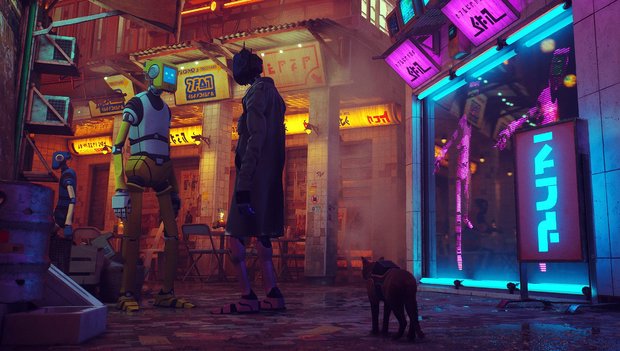
- 1 Comment
Easy to lose yourself in this stunning postapocalyptic cat adventure
I'm not exactly sure what I was expecting from BlueTwelve Studio’s Stray. Some type of open-world being-a-cat simulator, maybe? A giant sandbox world where I could leap around and knock things over and nuzzle strangers and meow at everyone? What I got instead was a fairly restrictive platformer with traditional graphic adventure elements that was far more focused on its impressive robot setting than its cute little cat-tagonist. Don't get me wrong: You can still leap around and knock things over and nuzzle strangers and meow at everyone! But that unhinged freedom of being a feline is noticeably absent and initially a bit disappointing. Yet expectations can be deceiving, so once I looked past what I’d anticipated from all the hype and accepted the game for what it actually is, I found a beautiful and moving experience in a vibrant and fascinating world.
Stray opens quietly and simply, with a subdued, moody tableau. It's raining outside and your goal is simply to get your furry legs under you as you pad around an old overgrown service tunnel. You and your three friends have gathered around in this clearly postapocalyptic hovel, sheltering from the storm outside, and you, an orange cat, get to familiarize yourself with the game's primary means of interaction. Namely, as you approach things you can interact with, you'll see a button prompt appear near them. Pressing it will allow you to do cat stuff. You can groom and cuddle and bat at your friends before settling down for a nice nap. When the storm clears, it's time to go exploring.
In this gentle tutorial sequence, Stray introduces you to all your major actions. One button lets you run; another lets you meow. On a gamepad, a rhythmic back-and-forth on the shoulder buttons (which, honestly, is kind of tricky at first) allows you to knead objects. And, most importantly, one button allows you to jump, though you can only do so when prompted. This was my first major disappointment. You can't leap around indiscriminately, but as you approach most surfaces, you see a little button prompt hovering around their edges. This is what allows you to jump. Your one point of freedom is that as you walk around a platform, the prompt will follow your position along the edge of the surface, allowing you to take off from different angles. The upside is that these prompts are just about everywhere, and each leap looks fluid and natural and exceptionally cat-like. The downside is that limiting freedom in this way is decidedly un-cat-like, and definitely takes a while to adapt to.

While walking with your furry pals in this first ten minutes of gameplay, you not only get the feel for the controls and your abilities, you also get a good look at this unusual world. There are no humans around, and all reminders of sentient life – pipes, electronics, structures – are rusted, disused, and fully overgrown with lush vegetation. It's like a gentle little cat playground where the blue sky overhead and verdant greenery all around are disturbed only by the soft dripping of water or the light thumping of cat feet. Until you fall down a massive hole to your apparent death.
The end.
Okay, not really. Cats, you know? They always land on their feet. And so have you, albeit wounded, in a cluttered, dingy pit of trash, enclosed on all sides by old cement and debris with no apparent signs of life but the stinging neon flickering along the corridor. You stumble, you black out, you wake back up, you limp along. You eventually recover and find more tunnels to explore. They take you out to cramped, narrow streets, filled with abandoned buildings and traces of what appears to be a dead civilization.
Here you’ll leap and run across balconies and fences, through windows, sewer grates and holes in old fences. Far from the bright blue skies you fell from, these skies are gray and misty, extending up into a muddy darkness that may be a night sky or something more ominous, like a cloud of pollution or a distant ceiling. The traversal here is fun, but any measure of flow to the movement is constantly interrupted by the limits placed upon you. You can hold your jump button and the cat will seamlessly leap from one surface to another, but it's hard to always find that next surface immediately. Therefore, instead of quick and smooth movements, you're often stopping, re-adjusting, looking for your next ledge, and then jumping into quick bursts of flow until your next interruption.
This is also where environmental puzzles are introduced, doing a pretty solid job of directing you where you need to go through lighting cues. Neon signs will flicker on in the distance, creating a point of illumination in the dingy gray for you to focus on. There are no objective markers or maps, so this is the primary way you're guided. (More on this later.) As you try to access different areas, you may have to nudge an object or pick it up in your mouth, moving it to the right spot to disrupt a spinning mechanism or reach a higher ledge. You may need to (trigger warning for cat owners!) slowly paw some object or other off a ledge, sending it crashing to the ground. You can do this to solve a puzzle, but also just for fun! The physics of these puzzle-platforming sections are incredibly satisfying, though very controlled. Most objects that need to be pushed can only be pushed one direction. Just like in its jumping, Stray is a very streamlined experience.

It’s at about this point where the gameplay shifts noticeably. By then I’d adjusted my expectations of playing a big, open cat-simulator to playing a tight, controlled cat-approximator, but I still wasn’t expecting the shift from puzzle-platformer to inventory-and-dialogue-focused adventure. The orange cat, you see, meets a tiny, flying robot friend named B-12, who attaches himself to you and can talk. He provides background info as you go along and will serve as your conduit to converse with the other characters you meet. He also provides you with a flashlight for the dark areas and an inventory for more traditional puzzle-solving. Now that you’re playing both a cat and a robot with the ability to talk and store items, the being-a-cat gimmick lessens quite a bit.
From here on you and B-12 will run around collecting objects and solving puzzles, while exploring various areas of a postapocalyptic robot metropolis. In addition to trying to make your way back out of this grimy underworld to the utopian cat world up above, you also begin to encounter “memories.” B-12 has a bit of amnesia and needs you to lead him to glowing points scattered randomly across your journey to bring back recollections of who he is. The larger sections of the city contain many of the standard genre tropes, such as the puzzle where you distract a shopkeeper to steal something behind his back. Or finding the four-digit combination to a safe that the owner has helpfully written down a hint for nearby. Or cobbling together a disguise to sneak into a restricted area (a disguise for someone else; they'd notice a cat). Most of this is achieved through a combination of finding inventory items and using them in the correct places, and doing cat stuff. Walking across keyboards, hiding in boxes, knocking stuff over, meowing at the exact wrong moment to make someone jump: it's all in there.
You will encounter other bright and fun robot characters, many of whom will help you on your main quest, or send you down little side quests. The “big” memories are found during your quest as a matter of course, but the “small” memories serve more as collectibles. They are rewards for solving optional puzzles or fully exploring the environment. If you collect all of them, you get a secret special ending and, thankfully, you can gather them through multiple playthroughs of individual chapters you've unlocked. There is no manual save, but the autosaves happen pretty frequently and, after you finish the game once, a chapter select menu unlocks, indicating which chapters still have memories to collect.

My biggest stumbling point when running around the city was not having a clue where I was or where I was going. Without a map, waypoints, a compass or any of the lighting cues from the earlier segments, the little open-world pockets in this mostly linear game became very confusing. A character may tell you to find all the houses with a certain little sign out front, but all the exteriors and all the signs look so similar, you may end up visiting the same one several times until you find your way in and say to yourself “Oh, I've been here already.”
For being a grimy gray cyberpunk game, Stray's nicest surprise is how vibrant and beautiful it all looks. Though the backdrop is pretty muted, the game is splashed with color at just about every moment. The busier street scenes are painted with the glow of bright electric lights, vivid storefronts, snazzy robot fashion choices, and the bright greens of potted plants. The interiors are cozy and warmly lit. Some of the chase sequences (oh yeah, sometimes you have to run from enemies in tense set pieces where they crowd behind you or leap out of hiding while you run full speed, trying not to get dogpiled, lest you die and have to start again) feature dramatic red lighting that really sets a dramatic and distressing mood. Unlike some of its postapocalyptic contemporaries, Stray trades the dark blues and grays and browns for a lively and colorful world.
The animation is also fantastic. Possibly as a byproduct of not being able to jump around freely, the actual movements of the feline protagonist look nearly perfect. His every action is fluid and realistic, juxtaposed by the awkward clanking of all your new robot friends. Thankfully there are no humans in this game, because veering into the uncanny valley would have threatened to break the spell of thinking you’re viewing a window to a real world. It’s not just visually that Stray’s aesthetic is truly a beautiful work of art, either. Its sparse, ambient soundtrack complements your exploration with soft, futuristic tones that really suck you into the environment.
The story that unfolds is fairly thoughtful, if one we've seen in cyberpunk dystopian fiction before, though the conclusion is much more tangible and hopeful than we usually see in these kinds of tales. The far more contemplative idea is one only hinted at but never really explored. A constant, quiet theme is the idea that the architecture of civilization is hostile to the general liveliness and fluidity of the natural world. As the cat, your way is constantly being blocked by spiked extrusions – a thing in our real world meant to keep cats or squirrels or birds from leaping on your air conditioner or balcony. Plenty of the difficulty of this game stems from the way a street or a building winds around, blocking a natural path and directing the intended user down a specific avenue. You, however, are not the intended user.
It's never addressed in the plot or dialogue, but this world is built in a way that just being a cat – the most adaptable of all pets! – has become difficult and exclusionary. It’s an environmental message that, intended or not, kept ringing in my head throughout every sequence. Conversely, but to the same point, Stray is almost set up like a “chosen one” narrative where very simple tasks are impossible for the robot citizens of the world and the only reason you can perform them is because the world isn't built for you. Being a creature of nature and not technology is as much a superpower as it is a hindrance.
While the puzzles are never too difficult or complex, some of the optional quests and collectible gathering took me quite a while to complete. As the story wrapped up, the game pushed towards two emotional conclusions: one regarding the characters that didn't quite land for me, and one regarding the setting itself, which hit me like a ton of bricks. I found myself far more invested in all the side characters and the game world than I was in the relationship between a silent, emotionless cat and an amnesiac guide robot. All in all, Stray clocked in at around six hours for me, which felt like a good length for the gameplay. And yet when the ending came up, I felt much sadder to be leaving the world behind than not directing the protagonists through it anymore.
The finale revived anew all the feelings I had in the game’s first half. First, a feeling of disappointment that the opening moments which left such a strong impression were never truly done justice by what followed. I spent the entire time dwelling on those early interactions, viewing a reunion with my cat friends as the ultimate goal. Stray, however, abandons that to focus instead on the world of robots. Second, I was blown away by one of the most impactful endings of any game I played this year. While some of the character-based resolutions didn’t quite resonate the way they were meant to, the larger impact the cat has on the world is presented in a jaw-dropping closing spectacle that I’ll likely never forget. Thus, the game ended much like it started, frustrating my early expectations while surprising me with something impressive and magical.
Final Verdict
Though it ended up being much different than I expected, Stray is a beautiful little game. With its tightly controlled puzzle-platforming elements and fairly generic graphic adventure puzzles, it may not live up to the full potential of its feline-focused premise, but it dazzles with its visuals and takes you on a thought-provoking journey through a subterranean wasteland of robots and trash. Despite some late-game character drama that doesn’t hit as hard as it could have, the game stirs up a lot of thoughtful ideas along the way and leaves you with powerful impressions that will stick with you for a long time afterward.
Hot take
Stray serves up so much beauty and wonder that, while the gameplay may be a bit generic and restrictive, your adventure with your new cat (and robot) friend is sure to secure a place in your memory and your heart.
Pros
- Beautiful graphics and eye-catching colors bring the amazing postapocalyptic world to life
- Tons of interesting characters to interact with
- Short-and-sweet game length offers just enough to satisfy
- Thought-provoking themes leave plenty to chew on
- Acting out weird, annoying, funny cat behaviors to solve puzzles is always fun
Cons
- Restricted movement mechanics impede your freedom in a way that detracts from the game's premise
- Neither the generic puzzle-platforming nor the adventure game puzzles really impress
Matt played Stray on a PlayStation 4 using a review code provided by the game's publisher.




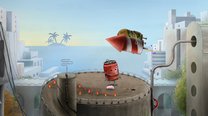

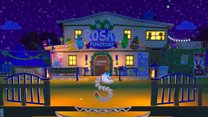

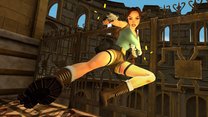
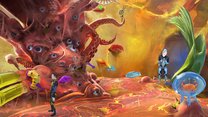
1 Comment
Want to join the discussion? Leave a comment as guest, sign in or register.
Great review
Reply
Leave a comment